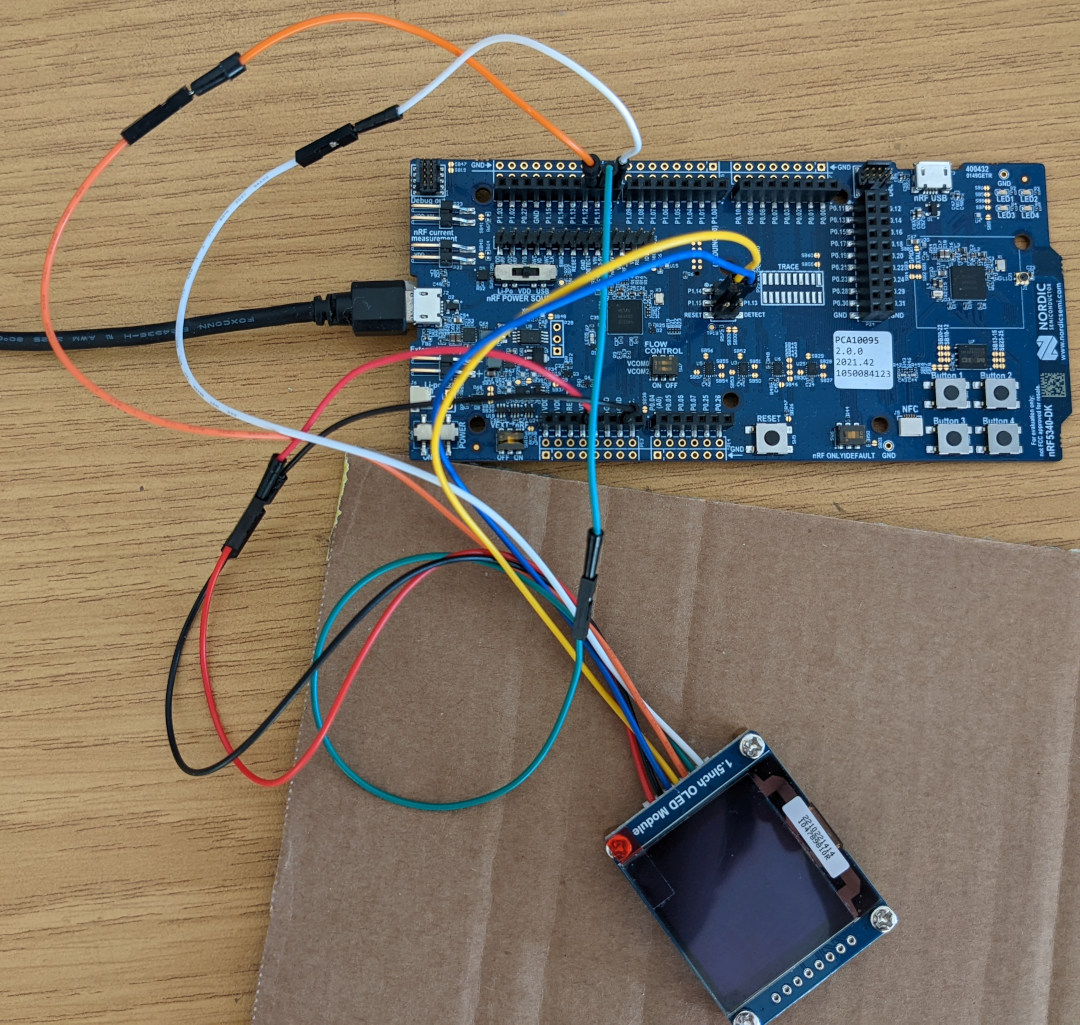I'm a beginner trying to attach an OLED screen module made by Waveshare (schematic, datasheet of OLED screen) to my nRF5340 DK devkit (schematic sadly only available as part of a .zip file here) via SPI, but the display gives me dark horizontal lines of moving across it, even when set to full on white. Capturing it on video or photo is difficult:
Connection of Board (see page 5 of schematics) -> OLED display:
- P7.4 -> VCC
- P7.7 -> GND
- P5.3 -> DIN
- P5.4 -> CLK
- P3.7 -> CS
- P3.6 -> DC
- P3.5 -> RST
Close-up of Waveshare OLED Board backside:
As configuration data for the display I'm sending exactly what waveshare had in their sample code and as far as I could tell with a logic analyzer, this data is correct.
The only thing I'm aware of doing that may be out of spec is that my devkit is only providing 3V, instead of the minimum of 3.3V Waveshare lists on their website. Could this have damaged the display?
Trying to use it with an arduino afterwards with exactly the Waveshare sample code also led to the weird lines / flickering.
Update
I had a temporary fluke success where the display was fine after turning it over to look for whether I could probe the 15V line of the display cable, so my current hypothesis is that this may be a wiring issue. I will solder a pin header on the other side of the display tomorrow and get back to you.
Thank you all very much so far :)





